With the advent of ChatGPT, it is safe to say that our educational landscape is slowly being transformed – with some comparing ChatGPT to a “super google”. After experimenting with it for the past few months, here are 3 useful ways utilising ChatGPT for learning, studying & teaching, that you can use as well!
Let’s dive into some of the methods we can use to achieve a more well-rounded understanding of concepts and facilitate more productive and effective learning sessions!
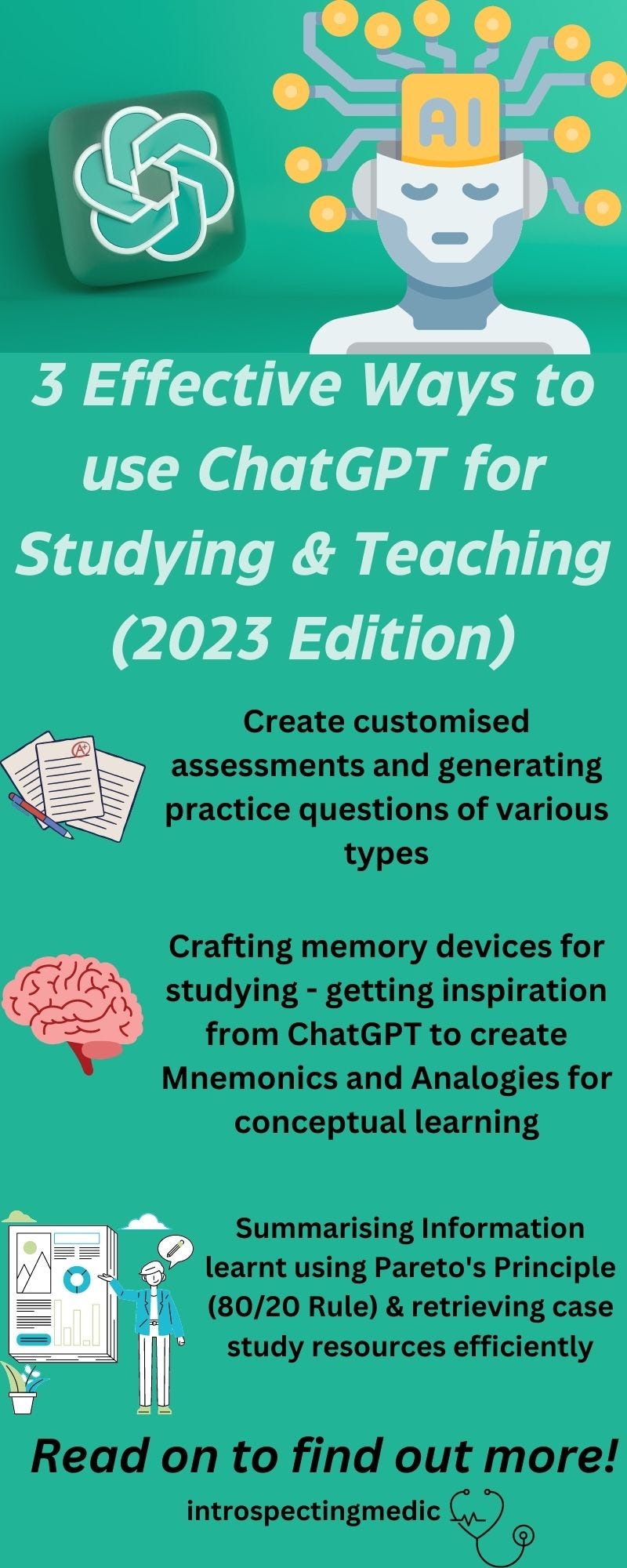

Table of Contents:
- Pros and Cons of using ChatGPT for Studying
- 3 Effective Ways to use ChatGPT for learning, studying & teaching
- Create assessments as a teaching resource using ChatGPT
- Craft memory devices for studying(Analogy & Mnemonics) using ChatGPT
- Summarise information effectively using ChatGPT
As we experiment with our learning styles and attempt methods that can better enhance our efficiency of learning and knowledge retention, it is integral to know how we can utilise ChatGPT well to facilitate a high yield form of learning.
In this post, I shall delve deeper into some of the methods I have tried and felt were effective, and share some opinions on these ways.
Pros and Cons of using ChatGPT
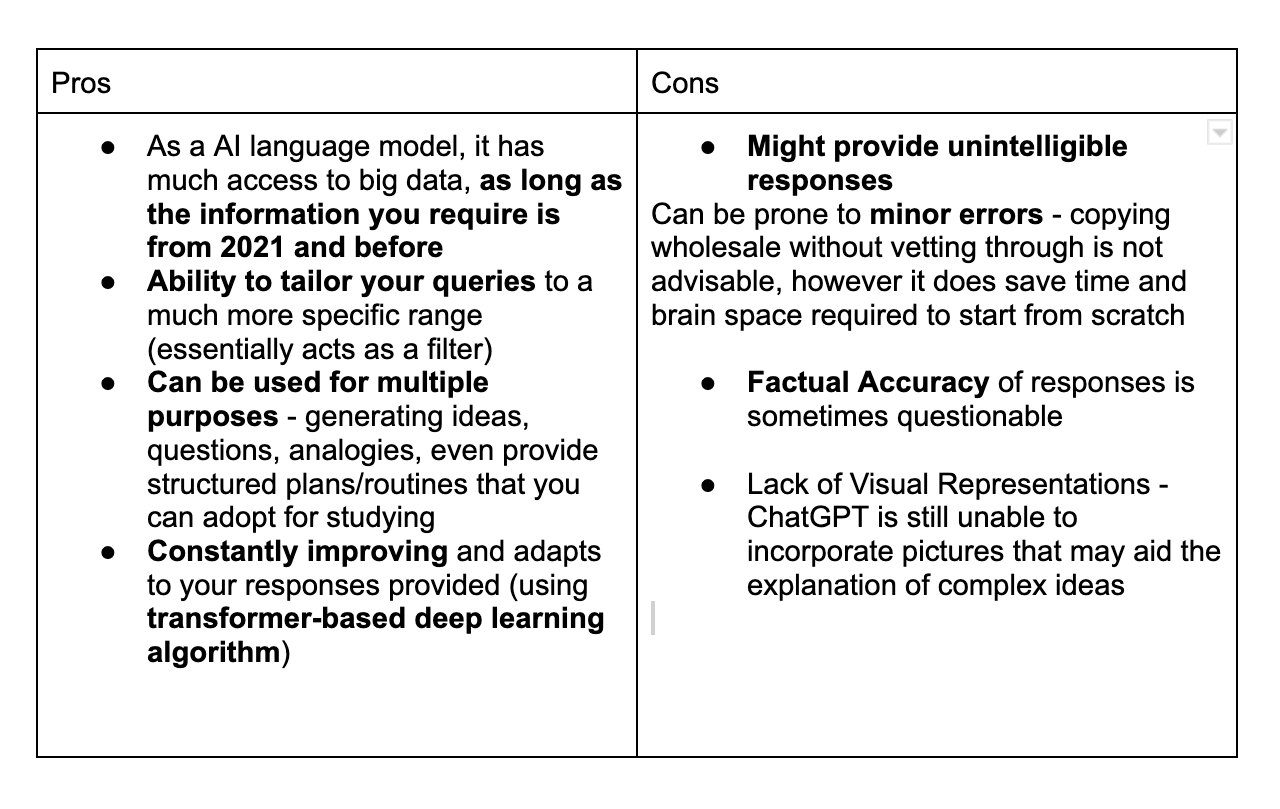

1. Create assessments as a teaching resource using ChatGPT
Why is this particular method useful? How does it differ from other resources that we already have? I think one of the main benefits of using ChatGPT is the idea of customisation, which you might not get when using practice resources such as assessment books/exam papers that are related.
How you can use ChatGPT to aid your learning is by creating learning resources targeted specifically at concepts that you are weaker at so as to build your confidence and increase your mastery after identifying your areas of weakness.


For example, when teaching students English vocabulary, there might be a few words that they were struggling with. After taking note of those words, you can insert the words into ChatGPT to generate questions with different phrasing where the vocabulary words are used. This helps to improve general understanding and assess students’ understanding of those particular words. You can also incorporate spaced repetition into this, by providing these practice questions over different time intervals.
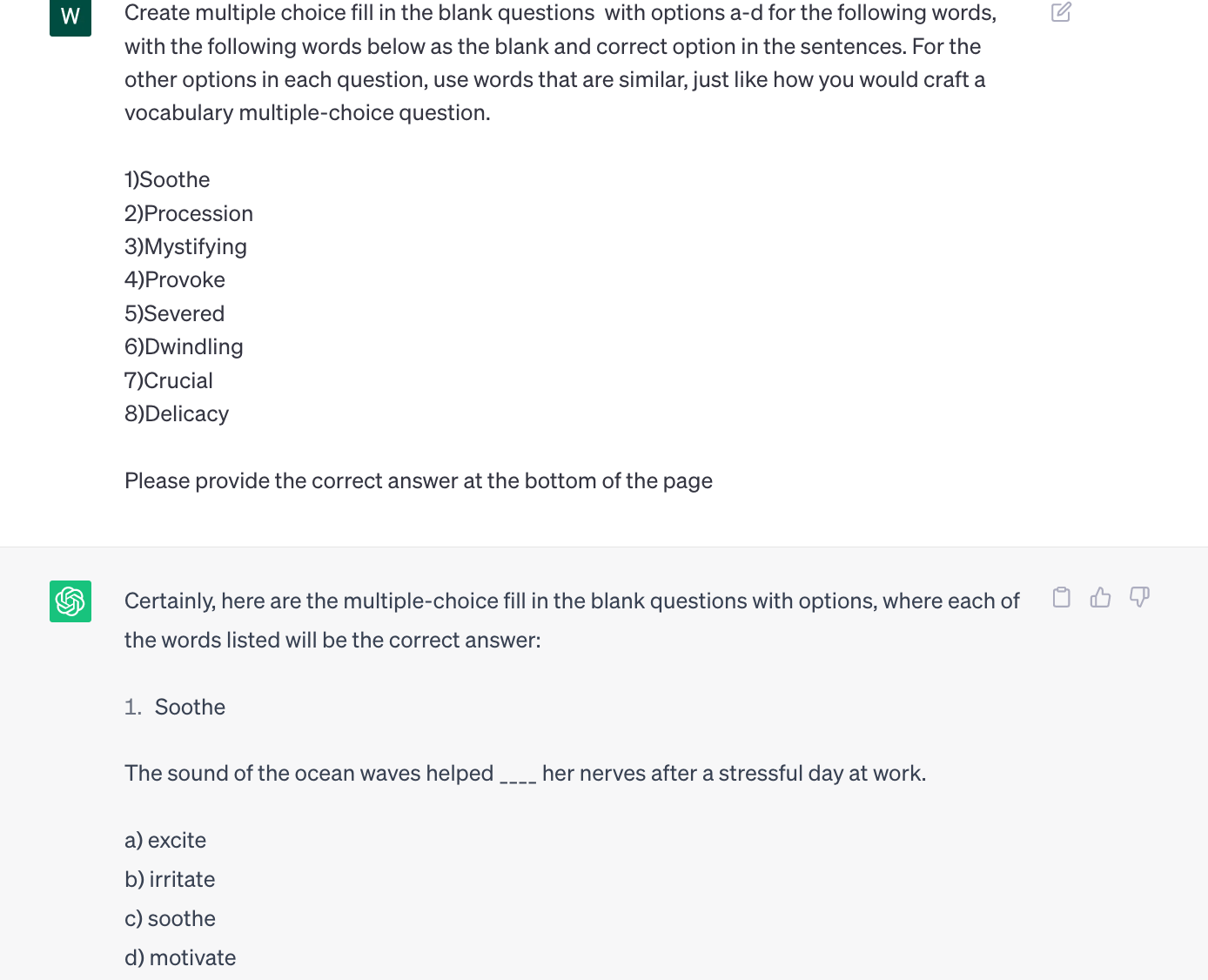

Here are 4 question types you can create for your students (for English Vocabulary):
4 Useful Question Types From ChatGPT (for English Vocabulary)
If you wish to take it up a notch, you can even create multiple choice questions using ChatGPT that are suitable to be imported into Kahoot. Check out this article below to find out how!
3 Easy Steps To Create Online Quizzes (ChatGPT and Kahoot)
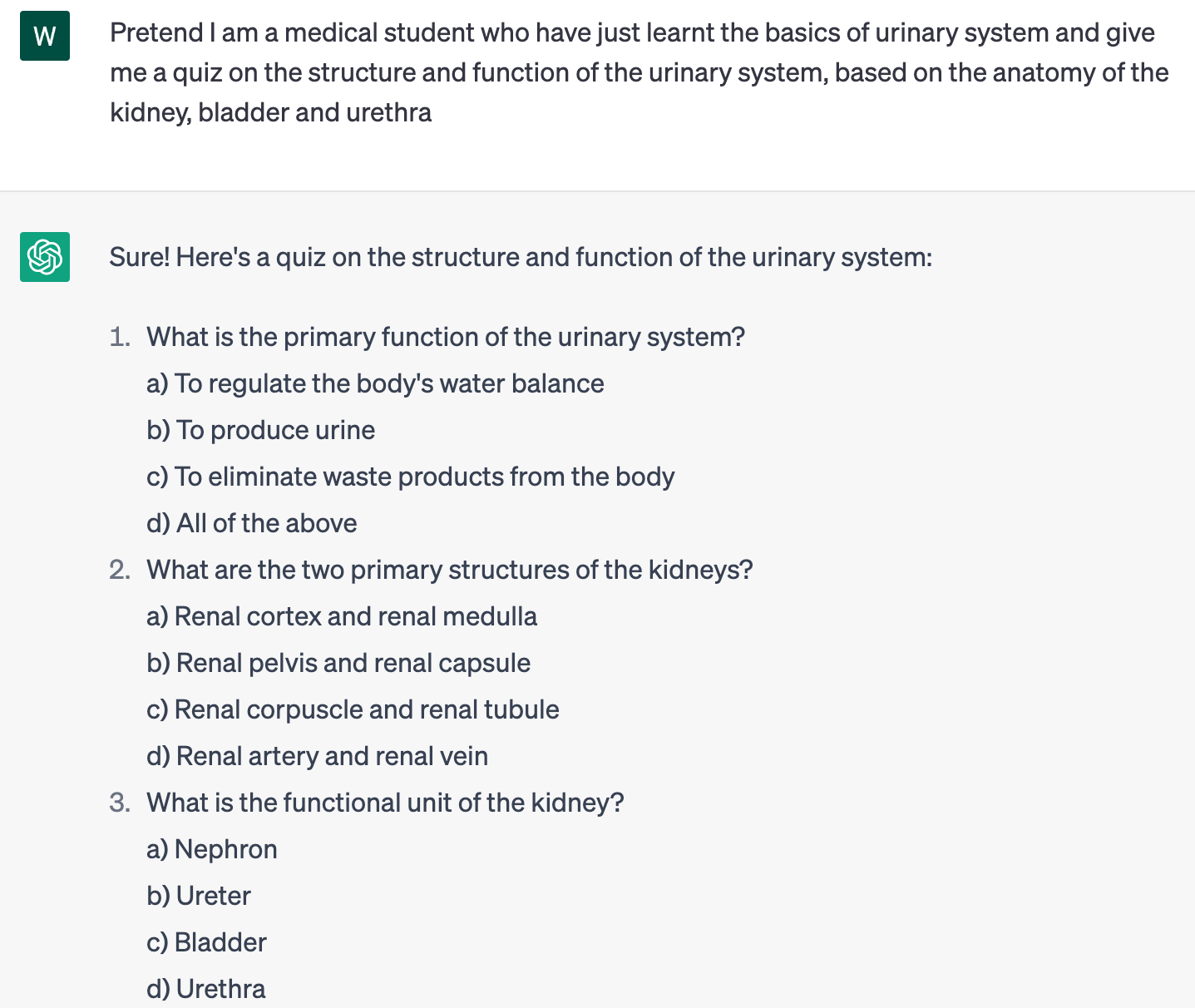

Some Limitations
When using it for personal learning, it might not be as effective if you are unclear of what is being assessed. Therefore, it is probably better to stick to resources such as structured assessment books or past-year examination papers from your school.
Personally, I have also tried creating many practice questions using ChatGPT (multiple-choice questions, fill-in-the-blank questions, true or false questions, open-ended/essay style questions, Anki deck questions), however, as I do not have much basis for comparison and I am uncertain as to how effective it may be, I shall not delve into that from the time-being.
2. Craft memory devices for studying(Analogy & Mnemonics) using ChatGPT


One of the best ways (in my opinion) to use ChatGPT is by generating ideas for you to curate your memory devices and retain information effectively. This can effectively support you in encoding information and making it more memorable. I personally believe this to be more effective than just reading your content in a chronological order, because it forces your brain to draw connections between the ideas.
Some Examples of Mnemonics/Analogies using ChatGPT:
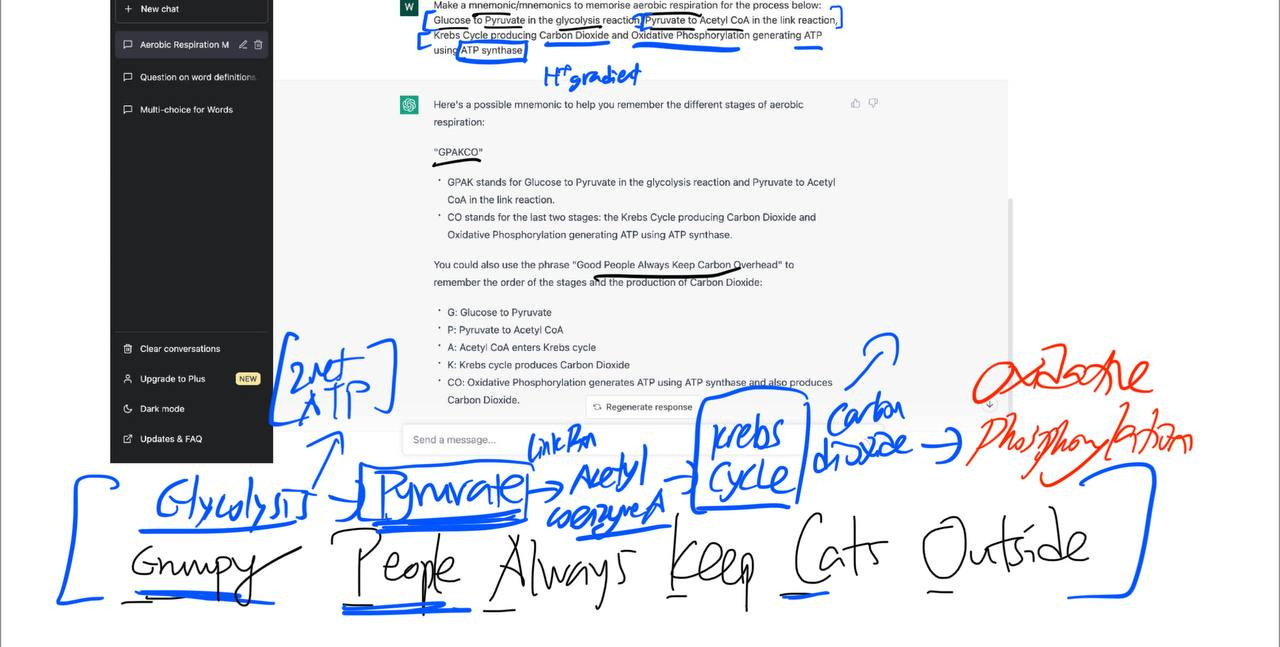

However, sometimes the analogies or mnemonics that ChatGPT provides might not be as relatable to you, and that’s okay! You can always ask it to generate another, or take inspiration from the results provided to make your own memory devices.
Check out my other articles that also share about how you can use ChatGPT to speed up the process:
How to Remember Faster & Study Better with Mnemonics (using ChatGPT)
3. Summarise information effectively using ChatGPT
Another way you can utilise ChatGPT is to treat it like a targeted search engine (like Google). When I first started out using ChatGPT, this was my primary mode of questions. What you can benefit from this is the ability to break down huge chunks of information into bite-size information that is much easier to digest and understand.
For example, I was learning about some surface-level information regarding skin anatomy and chanced across the concept of the different layers of the epithelial cell of the skin. Having many complicated terminologies as a beginner made me really confused, hence I went to ChatGPT for help.
Here was the response provided by ChatGPT:


Disclaimer:Not properly fact-checked yet
Hence, using targeted prompts to request ChatGPT to summarise complicated content into a few sentences made it much easier to digest information, so that concepts seem less foreign and complicated.
Using Pareto’s Principle
One good way to improve the result generated is by referencing the Pareto’s Principle, commonly known as 80/20 rule, which illustrates the concept of how 80% of the output/consequences arises from 20% of the input/causes. Likewise, this theory can also be applied to learning in most instances, if we can identify the 20% of high yield information and focus our energy on having a strong understanding of the 20% to yield 80% of the results.
Finding Targeted Case Studies
Additionally, one can use ChatGPT to highlight specific case studies that are relevant to your search, so as to give you an idea of some information before delve deeper into it. Using this can give you easier access to resources that point to current affairs, which can also deepen your appreciation of a mundane concept you learn in school. Similarly, you can utilise ChatGPT to speed up your process of retrieving research articles so that it narrows down your search.
Using ChatGPT to generate Geographical Case Studies
In the example below, I requested ChatGPT to give a brief introduction of some case studies regarding some notable real-life water budget situations that I can search more about for geographical studies:
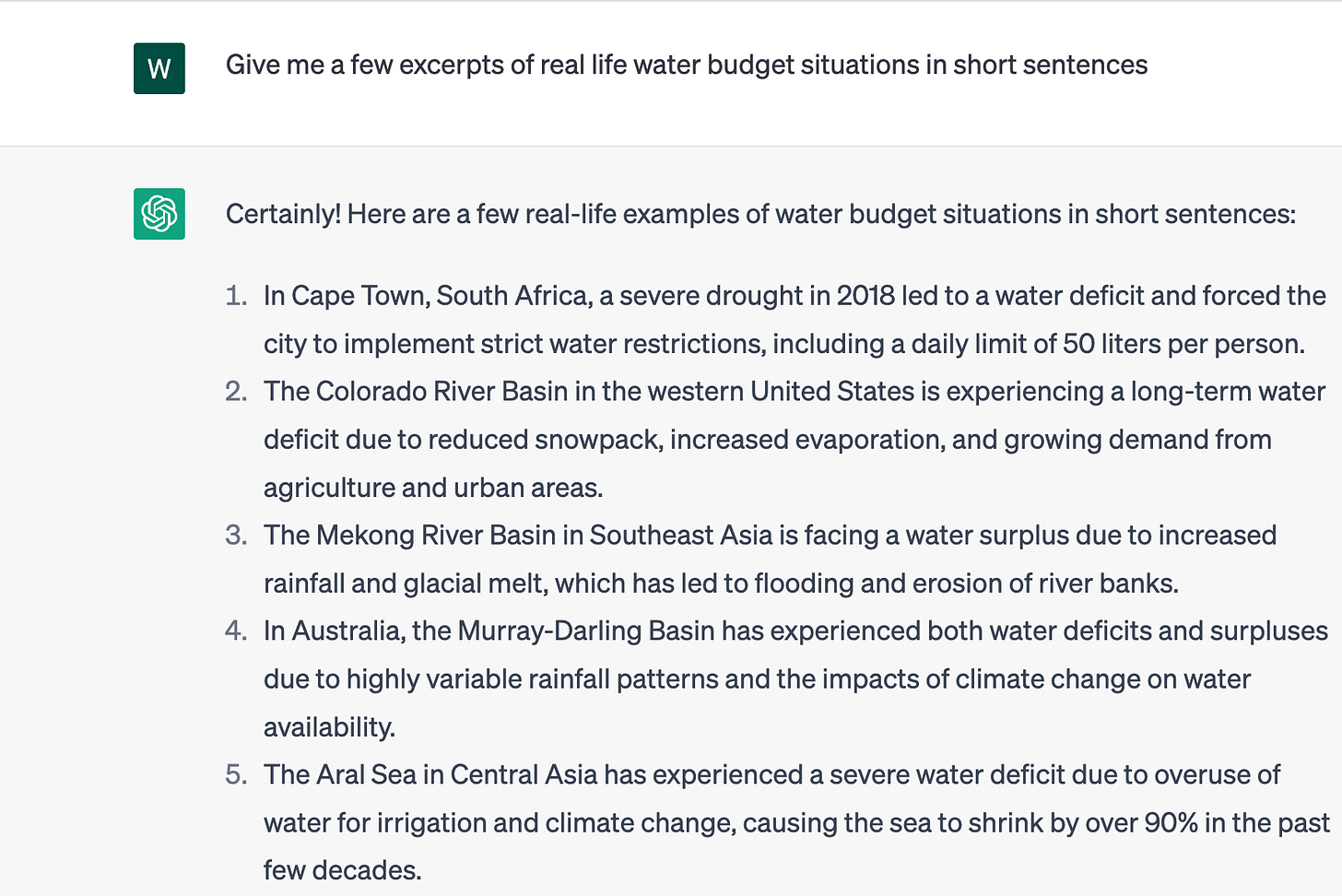

One of the main caveats, however, is that ChatGPT is text-based. Hence, it might be more suitable for some to source for more visually appealing learning resources – videos that animate processes, pictures/gifs that help you piece the information together and visualise more effectively. Ultimately, this is dependent on where you are comfortable sourcing for information and what type of resources you prefer when learning and processing information.
Concluding Remarks
All in all, this is just my takeaway from using ChatGPT, and the user experience will differ from person to person. The ways that I have shared are non-exhaustive, and there are certainly many other ways that people have used it for learning, for instance, to create personalised and comprehensive revision schedules that is customised based on the content they wish to cover, the amount of time they have allocated for these particular tasks, etc.
Advancements in Deep-Learning Algorithms
As ChatGPT (and other Artificial Intelligence platforms) continue to develop using deep-learning algorithms, it will continue to transform and enhance the educational landscape (as well as healthcare, technology, etc.), if coupled with stringent regulations and ethical considerations in mind. What might not be possible to implement now might be functional a few years down the road. It is important to constantly learn and improve, especially with the advancements in AI.
What I share now might be obsolete and outdated in a few months time, so do share any criticisms and new tips that you have tried out with me, I’ll be happy to learn!
Happy Reading ~
